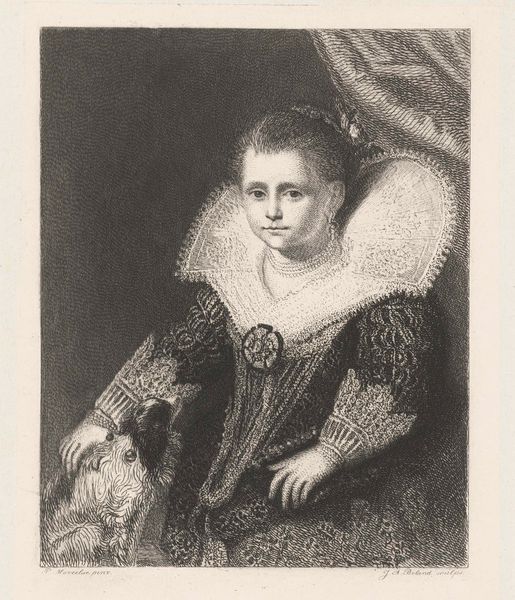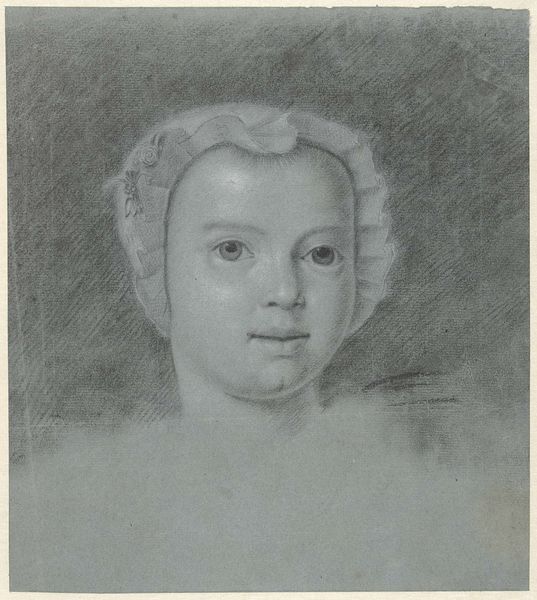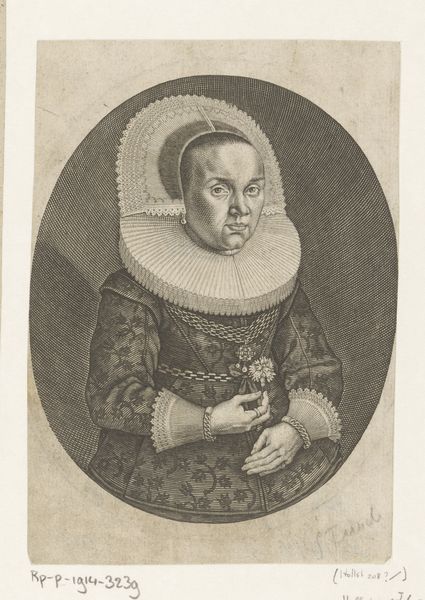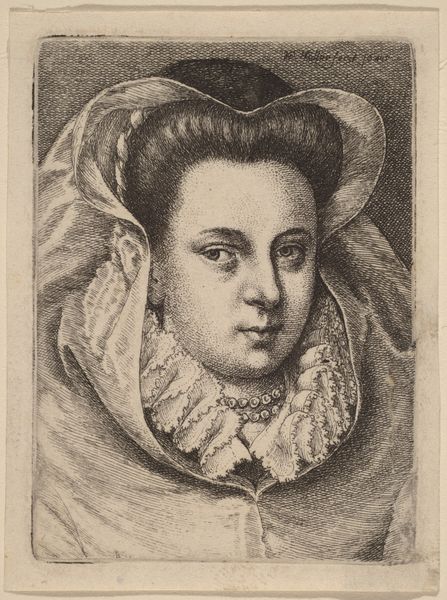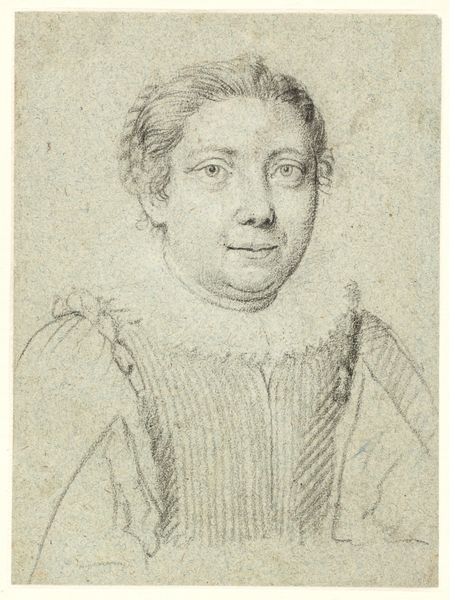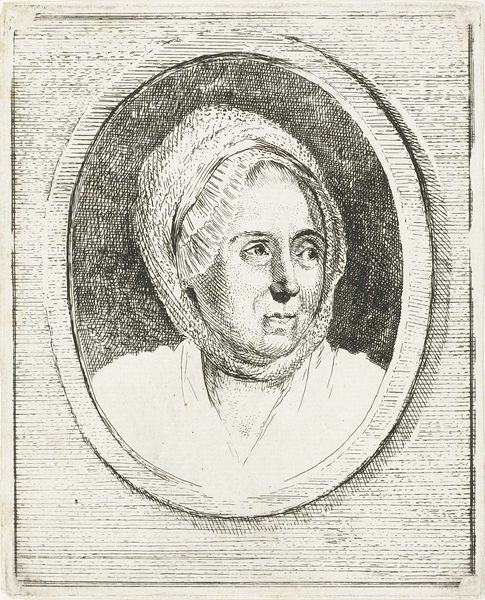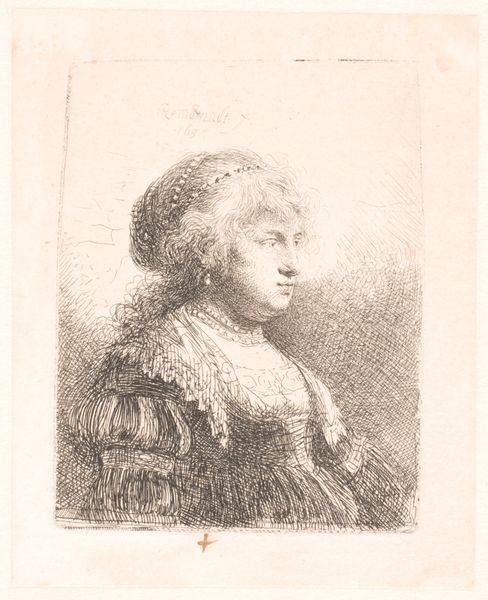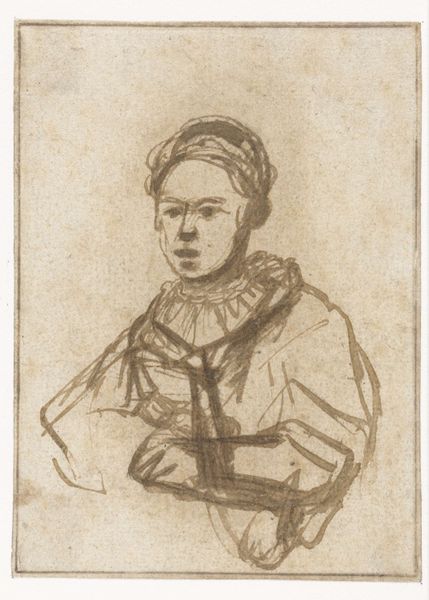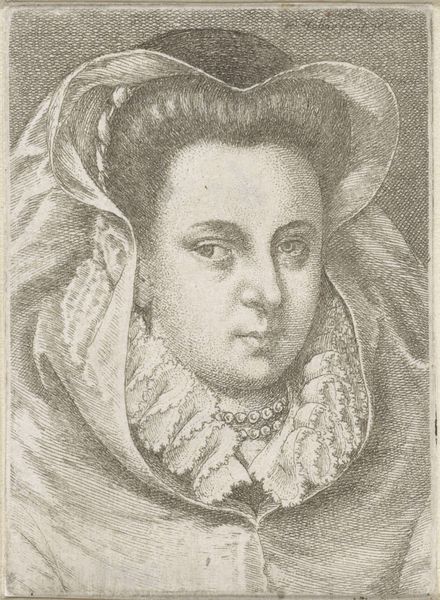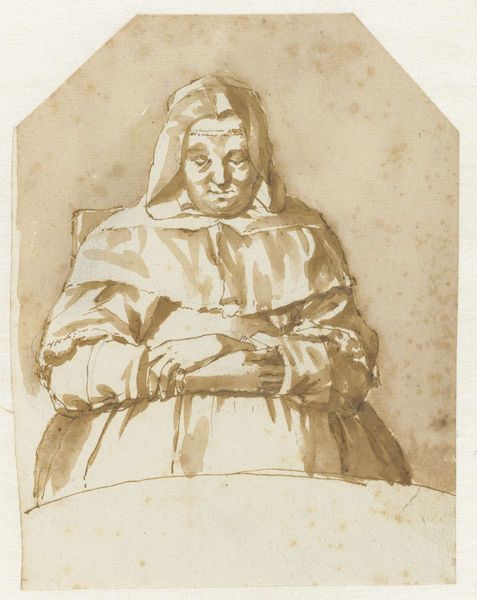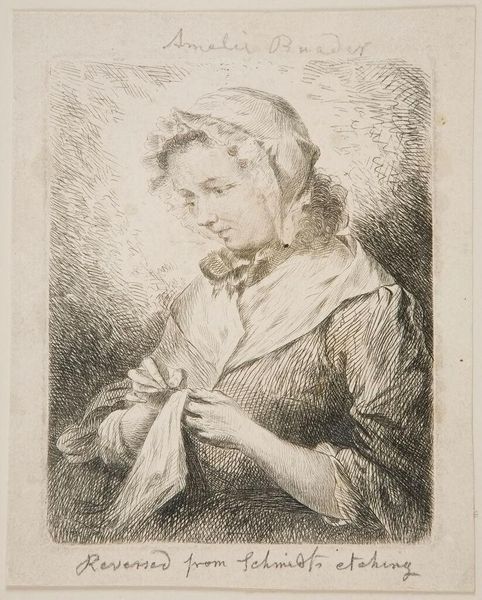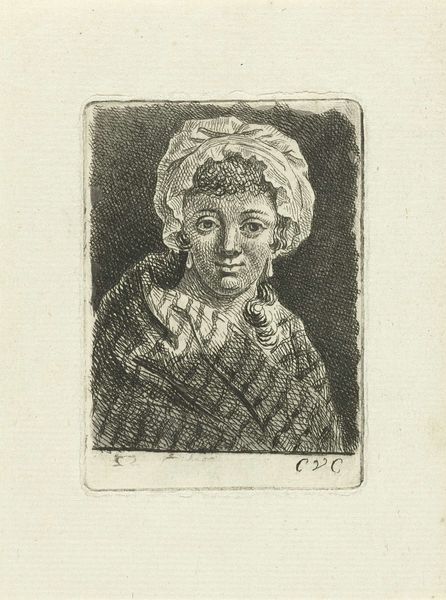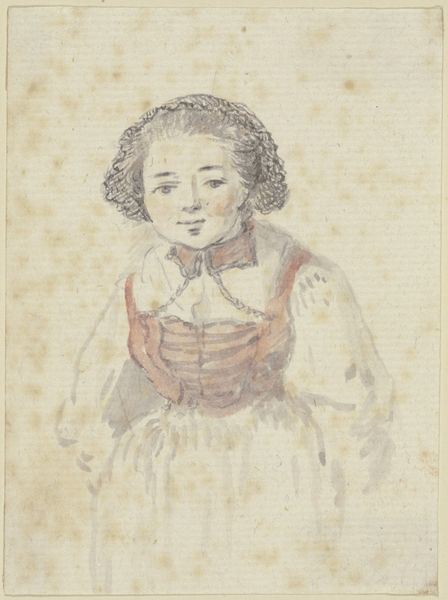
print, etching, engraving
#
portrait
# print
#
etching
#
engraving
Dimensions: width 162 mm, height 200 mm
Copyright: Rijks Museum: Open Domain
Curator: Let’s turn our attention to this engraving and etching entitled “Portret van het kind van de buurvrouw van Rembrandt,” or "Portrait of the Child of Rembrandt's Neighbor," dating approximately from 1737 to 1792 and attributed to John Greenwood. Editor: What strikes me immediately is the intense gaze of the child. Despite the antiquated style and medium, that direct eye contact transcends time. Curator: Indeed. Consider the context. This piece offers insight into the domestic sphere of 18th-century artistic communities. Greenwood, an artist working in the wake of Rembrandt, directly engages with the master's legacy. Editor: And by portraying this child, likely from a modest background, he offers a glimpse into a social strata not typically immortalized in portraiture at that time. The detailed rendering of the clothing—that rather ornate cap and ruffled collar—speaks volumes. It reflects the aspiration and perhaps the subtle markers of class in that community. Curator: The print medium itself is crucial. Etchings and engravings made art accessible, fostering a broader audience beyond the elite who could commission painted portraits. Works like these served to disseminate visual culture, influencing artistic styles and perceptions of the domestic ideal. Editor: I see a parallel to today's social media portraiture—these glimpses into everyday life, circulated widely, that both reflect and shape societal norms. Curator: Interesting, connecting the democratization of the image then and now. Perhaps these affordable, reproducible images fueled discussions around identity, status, and representation, albeit within very different socio-political structures. Editor: Absolutely. It challenges us to look critically at how artists represent ordinary individuals, and whose stories are being told – then and now. What is the social impact when likenesses are proliferated to broader audiences? Curator: It forces one to re-evaluate the narrative being projected and reconsider historical narratives. It is quite complex. Editor: Yes. And I appreciate that it leads to greater insights into art and culture from the time period.
Comments
No comments
Be the first to comment and join the conversation on the ultimate creative platform.
